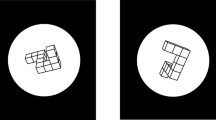Abstract
Recent work in the philosophy of science has generated an apparent conflict between theories attempting to explicate the nature of scientific representation. On one side, there are what one might call ‘informational’ views, which emphasize objective relations (such as similarity, isomorphism, and homomorphism) between representations (theories, models, simulations, diagrams, etc.) and their target systems. On the other side, there are what one might call ‘functional’ views, which emphasize cognitive activities performed in connection with these targets, such as interpretation and inference. The main sources of the impression of conflict here are arguments by some functionalists to the effect that informational theories are flawed: it is suggested that relations typically championed by informational theories are neither necessary nor sufficient for scientific representation, and that any theory excluding functions is inadequate. In this paper I critically examine these arguments, and contend that, as it turns out, informational and functional theories are importantly complementary.
Similar content being viewed by others
References
Bartels A. (2006) Defending the structural concept of representation. Theoria 55: 7–19
Callender C., Cohen J. (2006) There is no special problem about scientific representation. Theoria 55: 67–85
Chakravartty A. (2004) Structuralism as a form of scientific realism. International Studies in the Philosophy of Science 18: 151–171
Chakravartty A. (2007) A metaphysics for scientific realism: Knowing the unobservable. Cambridge University Press, Cambridge
Contessa G. (2007) Scientific representation, interpretation, and surrogative reasoning. Philosophy of Science 74: 48–68
Currie G. (1995) Image and mind: Film, philosophy and cognitive science. Cambridge University Press, Cambridge
da Costa N.C.A., French S. (2003) Science and partial truth: A unitary understanding of models and scientific reasoning. Oxford University Press, Oxford
Demopoulos W., Friedman M. (1985) Critical notice: Bertrand Russell’s The Analysis of Matter: Its historical context and contemporary interest. Philosophy of Science 52: 621–639
Elgin C.Z. (2004) True enough. Philosophical Issues 14: 113–131
Elgin, C. Z. (2006). Exemplification, idealization, and understanding. Presented at Beyond Mimesis and Nominalism: Representation in Art and Science. Organized by the Courtauld Institute and London School of Economics.
French S. (2003) A model-theoretic account of representation (or, I don’t know much about art...but I know it involves isomorphism). Philosophy of Science 70: 1472–1483
Frigg R. (2006) Scientific representation and the semantic view of theories. Theoria 50: 49–65
Giere R.N. (1988) Explaining science: A cognitive approach. University of Chicago Press, Chicago
Giere, R. N. (1999). Using models to represent reality. In L. Magnani, N. J. Nersessian, & P. Thagard (Eds.), Model-based reasoning in scientific discovery (pp. 41–57). Dordrecht: Kluwer.
Giere R.N. (2004) How models are used to represent reality. Philosophy of Science 71: 742–752
Goodman N. (1976) Languages of art: An approach to a theory of symbols (2nd ed). Indianapolis, Hackett
Hughes R.I.G. (1997) Models and representation. Philosophy of Science 64: S325–S336
Ketland J. (2004) Empirical adequacy and ramsification. British Journal for the Philosophy of Science 55: 287–300
Melia J., Saatsi J. (2006) Ramseyfication and theoretical content. British Journal for the Philosophy of Science 57: 561–585
Mundy B. (1986) On the general theory of meaningful representation. Synthese 67: 391–437
Scruton R. (1983) The aesthetic understanding: Essays in the philosophy of art and culture. Methuen, London
Suárez M. (2003) Scientific representation: Against similarity and isomorphism. International Studies in the Philosophy of Science 17: 225–244
Suárez M. (2004) An inferential conception of scientific representation. Philosophy of Science 71: 767–779
SuárezM. Solé A. (2006) On the analogy between cognitive representation and truth. Theoria 55: 39–48
Swoyer C. (1991) Structural representation and surrogative reasoning. Synthese 87: 449–508
van Fraassen B.C. (1980) The scientific image. Oxford University Press, Oxford
van Fraassen B.C. (1989) Laws and symmetry. Clarendon, Oxford
Walton K.L. (1984) Transparent pictures: On the nature of photographic realism. Critical Inquiry 11: 246–277
Worrall, J., & Zahar, E. G. (2001). Ramseyfication and structural realism. In E. G. Zahar (Ed.), Poincaré’s philosophy: From conventionalism to phenomenology (Appendix IV, pp. 236–251). Chicago: Open Court.
Author information
Authors and Affiliations
Corresponding author
Rights and permissions
About this article
Cite this article
Chakravartty, A. Informational versus functional theories of scientific representation. Synthese 172, 197 (2010). https://doi.org/10.1007/s11229-009-9502-3
Received:
Accepted:
Published:
DOI: https://doi.org/10.1007/s11229-009-9502-3




